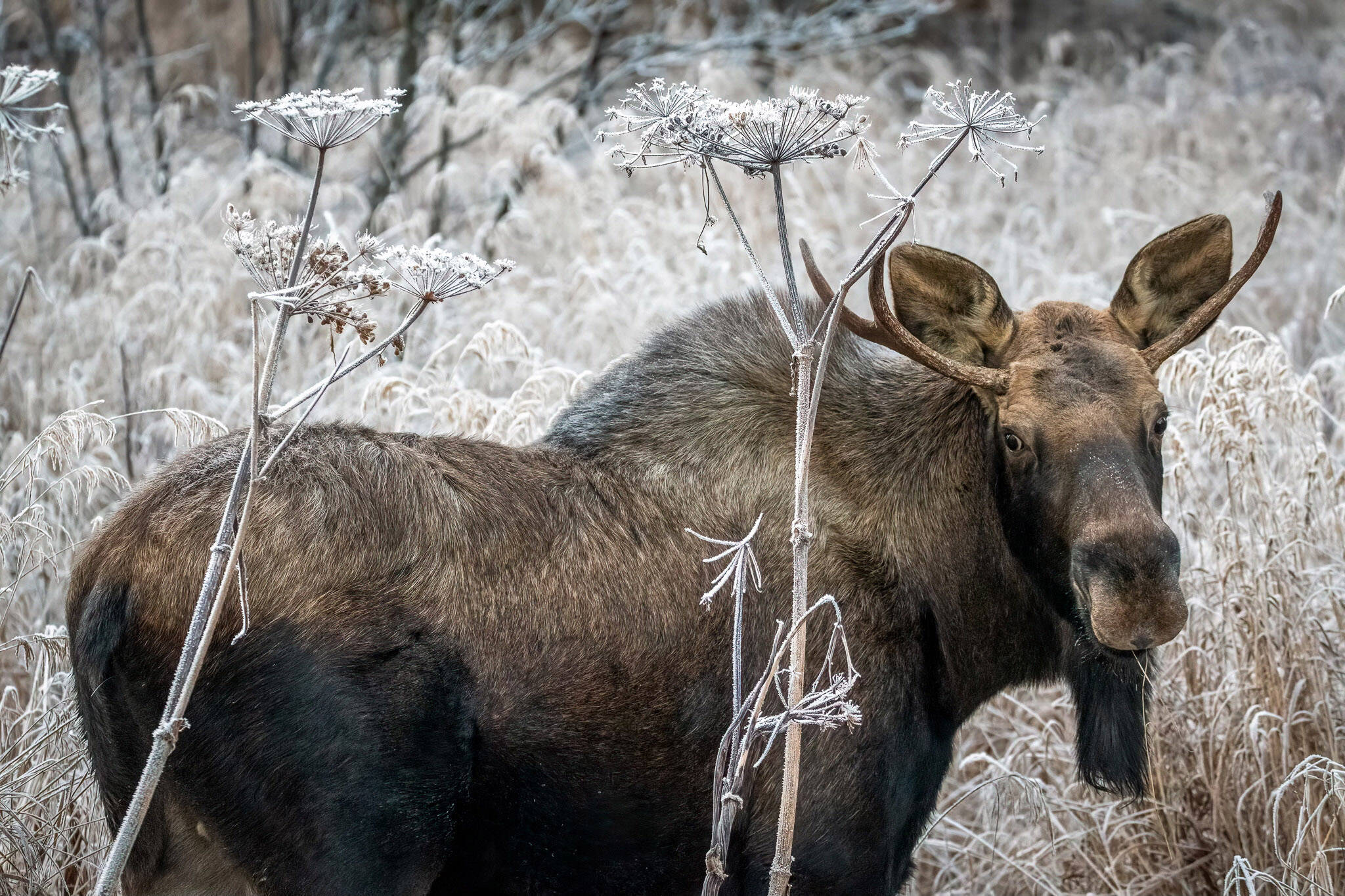In 1941, President Franklin D. Roosevelt established the Kenai National Moose Range. Today this nearly 2-million-acre tract of public land is known as the Kenai National Wildlife Refuge after it was integrated into the National Wildlife Refuge system in 1980.
David Spencer was hired as the first manager in 1948, and he worked tirelessly to lay the groundwork for future wildlife management and conservation efforts on the Kenai Peninsula and throughout the state.
During the 1940s, there was no local administration or enforcement to regulate wildlife harvests on the Kenai Peninsula. At the time, Kenai moose were being poached at an alarming rate and populations were in decline. When Spencer was hired, his first and primary task was to curb the poaching of moose on the Kenai Peninsula, particularly within the moose range itself.
Spencer worked to develop appropriate and effective management strategies to increase and manage Kenai moose populations. He conducted aerial moose surveys to gather data needed for moose management.
His main objective was to maximize moose abundance and determine the maximum moose densities that habitats could sustain through winter. Ultimately, the goal was to maximize moose population densities and manage moose abundance through controlled hunting pressure.
Spencer was lucky enough to see moose populations on the Kenai Peninsula at their peak. In 1947, a large wildfire burned over 300,000 acres on the Kenai Peninsula. The subsequent regeneration of willows and birch throughout the burn greatly improved moose habitats, creating ideal moose habitats.
The simultaneous improvement and enforcement of hunting regulations during the 1950s allowed the moose population to increase by over 400 percent compared to pre-fire numbers.
Born in 1915, Spencer lived and worked during an important era for wildlife management and conservation in the United States. He studied under the celebrated Aldo Leopold, known as the “father of wildlife management,” at the University of Wisconsin.
Spencer also worked with Aldo’s son, Starker Leopold, and together they conducted bird studies in Mexico, often traveling on horseback or on foot.
I never had the pleasure of meeting Spencer, but I did have the opportunity to work with some of his contemporaries like Dave Klein. Dr. Klein always had some interesting stories about working in Alaska back then. My favorite story about Spencer involves the introduction of mountain goats to Kodiak Island and a literal goat rope.
Spencer was also a pilot and, in 1952, Spencer and Dr. Klein were flying a Grumman Widgeon near Cooper Lake when they spotted three mountain goats swimming across the lake. Since they had been involved with efforts to introduce mountain goats to Kodiak Island that had met with limited success, they decided to take advantage of this rare opportunity and landed on the lake near the swimming goats.
Spencer taxied the Widgeon up alongside the mountain goats while Dr. Klein proceeded to grab one of the swimming goats and wrestle it into the plane. Since they were not prepared for a capture operation, they had no capture drugs to anesthetize the goat. Instead, they used some tie-down ropes that they had in the plane to hobble the goat and secured it in the back of the Widgeon.
Once the goat was on board and tied down, Spencer and Dr. Klein flew to Soldotna airport where they found some pieces of garden hose to cover the tips of the goat’s horns, mainly to keep from getting stabbed. They then fueled up the plane and headed for Kodiak Island, where they landed in Hidden Basin and released the goat.
Spencer was far from just a Kenai moose biologist. Prior to being hired as manager for the moose range, Spencer had worked for the U.S. Navy Air Corps as a multiengine seaplane flight instructor in Texas during the early 1940s.
He also conducted aerial waterfowl surveys throughout Alaska, Mexico, Canada, Florida and even Guatemala. He conducted a variety of wildlife projects and worked in some of the most remote reaches of the state, including the Aleutian Islands and Nunivak Island.
Spencer also played a pivotal role in the U.S. Fish & Wildlife Service’s efforts to bring the Aleutian cackling goose back from near extinction. He also initiated the establishment of the Kenai Canoe System in the Kenai Wilderness. Eventually, he would serve as the supervisor of all the National Wildlife Refuges in Alaska.
In the 1950s, Spencer faced a new issue. Oil and gas exploration began in 1952 on the Kenai Peninsula, and the Kenai National Moose Range was subsequently opened to oil and gas leasing in 1956. The Swanson River Discovery Well soon began producing commercial quantities of oil and there was great interest in further expansion of oil development in the area.
Spencer hired John Hakala, who was reported to have strictly imposed federal regulations on oil and gas development in the Moose Range. Spencer, Hakala and others worked tirelessly to develop strategies to enable oil and gas expansion while also attempting to minimize the negative impacts of such development on local wildlife populations.
Mr. Spencer retired from the U.S. Fish & Wildlife Service in 1976. Throughout his career he certainly saw many spectacular places and wildlife spectacles. He was even present on the Kenai when Alaska became the 49th state in 1959.
He worked through numerous management issues including conflicting land uses, recovery of endangered species, oil and gas development, poaching, and the selection of lands to be added to the National Wildlife Refuge system throughout the state.
For his many achievements, he was honored by entities including the National Audubon Society and the University of Alaska. There is even a unit of the Kenai Wilderness named in his honor. In 1973, Mr. Spencer received the U.S. Department of the Interior’s Distinguished Service Award, the agency’s highest honor.
Dom Watts is the pilot/biologist for the Kenai National Wildlife Refuge. Find more Refuge Notebook articles (1999–present) at
https://www.fws.gov/refuge/

